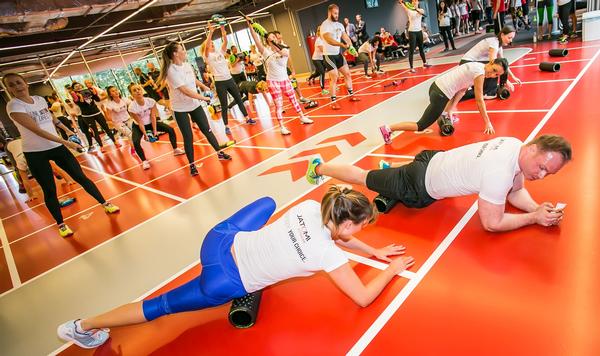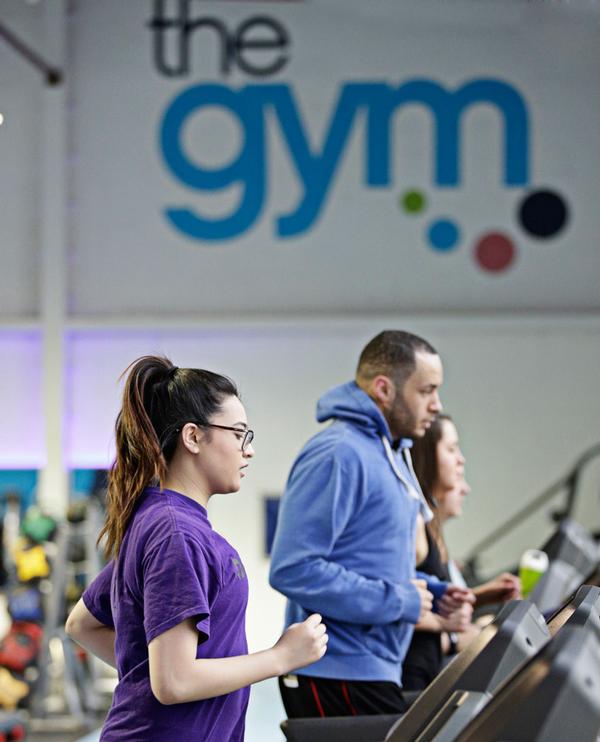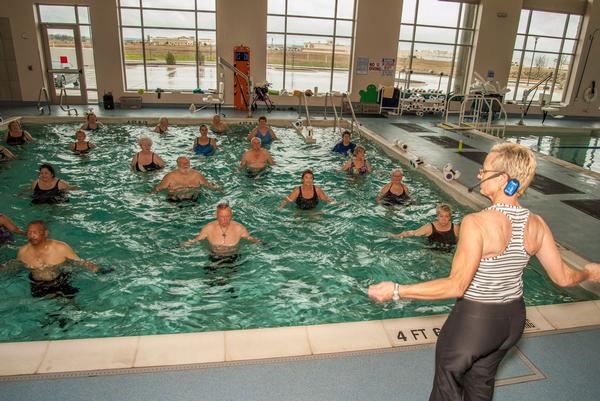 SELECTED
ISSUE
SELECTED
ISSUE
|
|
Leisure Management - Leading by example

Retention

|
|
| Leading by example
|

What’s the single best thing you’ve done in the last year to boost retention? That’s the question we asked four operators. Here’s what they had to say…
Dr Paul Bedford PhD, Retention Guru
|
|
|
 |

By simply saying ‘hello’, we’ve taken our membership from 400 to 2,500 |
 |
Angela Dale
Head of Sport
Keele University, UK
After listening to retention expert Dr Paul Bedford speak at a British Universities & Colleges Sport (BUCS) event in 2008, I started to observe our staff both on reception and within the gym. Paul had explained the power behind simply talking to people, which I thought I knew and had taken for granted was already happening. But it wasn’t.
The staff at our centre explained that most students had headphones on while they exercised, and so they assumed they weren’t interested in being approached – that they simply wanted to get on with their workout.
It took around two years to embed a complete culture change, but the more we said ‘hi’, the more we found out what the students needed. The staff are now more confident and the gym is a friendlier place to be. Students find us more approachable and often come into the office to ask for things. That didn’t happen before.
Previously we had around 400 users with a 70/30 split between students and staff/external members. Now we have 2,500 users and an 80/20 split. The use of all our other sporting facilities has grown too – we’re at full capacity. I’m convinced this is down to the shift in attitude of the staff as we haven’t done anything else!
The building is old – it was built in 1967 – but it’s the staff who make it what it is. It doesn’t cost anything to be nice and Keele University is currently first for student experience in the Times Best University Guide.
| |


|

A simple shift in staff attitude has boosted the use of all sports facilities at Keele facilitiKee=Univiersity |
|
|
 |

By focusing every member of staff on customer experience, we increased renewals by more than 25 per cent |
 |
Selda Gamzeli
Former Group Member Experience Director
Jatomi Fitness
In 2013, there was no focus on retention at Jatomi Fitness – it was all on sales – and only 4 per cent of members renewed their contracts. Once on board, I spent a month training all 400 staff – from the fitness team to housekeeping, across 77 clubs in six countries – in customer service, communication skills and the importance of retention.
We introduced the Net Promoter Score (NPS) alongside other questions to survey new and current members, as well as leavers, creating a large database of information about our members and our service. We also changed everyone’s key performance indicators (KPIs), from the managers to the cleaners, to include the NPS scores and a focus on increasing loyalty.
Every day at noon, all countries and all clubs would have a meeting to focus on the member experience, defining the problems and the solutions and creating a report and action plan. Everyone had to do something to increase retention, and each month we held a competition between countries and clubs.
General managers were tasked with calling new members and checking back with them one week later, as well as following up on any complaints.
At the end of six months, the renewal rate jumped to 17 per cent, and by the end of the first year it hit 30 per cent. In Turkey there was a massive difference in our NPS scores, which rose from -25 to +25.
HCM update: Gamzeli is no longer with the Jatomi business, which has – since her departure – closed all its Turkish clubs.
| |


|

Jatomi boosted its NPS scores by focusing on staff training |
|
|
 |

By analysing our membership data, we’ve increased tenure by 25 per cent |
 |
Andy Robinson
Head of Analytics
The Gym Group
We worked with fitness industry consultant Rob Gregory and retention expert Dr Paul Bedford to analyse more than 800,000 of our member records last year, which has given us a deep understanding of our customer lifecycle and member behaviour. This is one of the advantages of working in a data-driven business: members use a pin number to access our gyms, so we have great insight into their usage.
The project has changed how we interact with our members – our focus now is to create a better member experience and encourage repeatable exercise habits among our member base.
In terms of member experience, we’ve introduced a number of projects this year to improve member retention, including a focus on staff interactions with members and redesigning gym layouts to ensure the equipment fits the usage patterns.
Meanwhile, the data analysis project highlighted how retention improves dramatically if the member forms a regular exercise habit. Off the back of this understanding, we’ve overhauled our electronic CRM programme. We now use the recency and frequency data in our database to develop triggered, targeted communications to drive usage and engagement in members’ initial membership period.
These projects have helped us achieve a 25 per cent increase in tenure in like-for-like gyms over the last 12 months.
| |


|

The Gym Group uses its data to improve the client experience |
|
|
 |

By focusing on our unique programmes and services, we improved our retention by 13 per cent |
 |
Heather Demere
GM
Resolute Wellness and Aquatics Centre (EXOS), US
Despite being just over a year old, when a commercial health club competitor came to town, we found ourselves vulnerable. Attrition increased as soon as pre-sale began at the new club.
As a medically-integrated, hospital-based centre, our overall experience and offerings were genuinely unique. However, we weren’t doing a good enough job at getting this message across to the broader community – or even our existing members.
The team took a strategic look at member engagement and retention efforts, and developed a new approach to programming and services that were unique to us in the market.
These initiatives included: new member orientations with a fitness specialist qualified to degree level; warm water aquatics; reformer pilates small group training; complementary childcare and ‘Mommy & Me’ group exercise and aqua classes; speciality training and group exercise; active senior/arthritis programmes; and empowerment programmes.
To enhance the overall experience, we also conducted in-house service training across all departments.
We believe that ‘what gets measured, gets managed’, so we added Medallia software as an engagement and retention measurement tool. This system enables us to capture customer feedback, understand it in real time and take action to improve the customer experience, as well as carrying out NPS on our behalf.
With the centre’s brand and retention strategy more solidly in place, and measurement tools set up to track progress, the team is increasing community outreach and building relationships for physician referral and so on – all ways of continuing to grow the membership and improve retention.
As a result of all this, retention improved by 13 per cent year-on-year and our NPS score was an impressive 64, compared to the overall US industry benchmark of 44.
| |


|

Acting on member feedback has boosted retention at Resolute |
|
|
Dr Paul Bedford is a leading authority on the management of retention, attrition and customer experience. He’s the author of the world’s largest retention study and runs the annual UK-based Retention Convention.
www.retentionguru.co.uk
|
|
 |
| Originally published in Health Club Management 2016 issue 11
|
|
 |
|